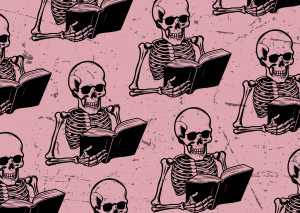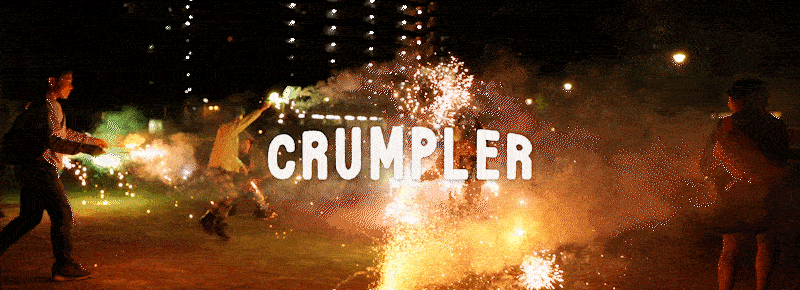
Content warning: Aboriginal and Torres Strait Islander readers are advised that this film depicts white colonial violence against Indigenous people. They are also advised that this story contains discussion of a person who has died.
Stephen Maxwell Johnson’s meat pie Western is an inspiring re-imagining of colonial encounters, albeit from a very unimaginative perspective.
THIS REVIEW CONTAINS SPOILERS
A revisionist historical thriller set in early 20th century Australia, High Ground is styled after American Westerns, but its director likes to call it a “Northern”. Shot primarily on Indigenous land in Kakadu National Park and Arnhem Land, the landscapes of High Ground are timeless and dreamlike, coming together as the languid backdrop of colonial crimes and settler conflict.
We meet a boy named Gutjuk (Guruwuk Mununggurr) learning his people’s customs and lore from his uncle, Baywara (Mark Garrawurra). A placid opening sequence is interrupted by a pair of Aboriginal runaways seeking refuge from white authorities. When police arrive, including World War I veteran and sharpshooter Travis (Simon Baker), an unplanned bloodbath ensues. Gutjuk — thanks to his mother’s quick thinking — survives long enough to be rescued by Travis, in the first of several questionable occurrences of a white saviour trope.
The film blends various stories and narratives from across the region, including stories of missions in Arnhem Land — parts of High Ground were shot near the former site of an Indigenous mission, Oenpelli, which is said to have been an inspiration for a similar one appearing in the film. Gutjuk himself bears a strong resemblance to the true historic figure, Narlim.
As Johnson explains, “It is a fiction, but it’s a fiction to tell a deeper and a much more powerful truth about what happened”. In this way, local stories and memories are woven into the tapestry that is High Ground; a film that speaks across generations for the people in the region.
The film’s use of speech is also a blend, with Aboriginal actors speaking in their own respective languages, leading to the unusual phenomenon of an Australian production with subtitles (the most recent coming to mind, Tanna, was released in 2015 in the Nauvhal language of Vanuatu).
Subtitles are employed only for crucial information and conversations, creating a second world within the film: a world we English speakers are only privy when invited. This makes for some humorous moments, such as some deliberate mistranslations, like when an older Gutjuk (Jacob Junior Nayinggul) translates for Grandfather Dharrpa (played by Yothu Yindi founding member Witiyana Marika), editorialising the instructions and dictums of their white counterparts.
Sound itself is a key strength of High Ground, which employs Indigenous music and natural sounds to breathe life into the audacious, sweeping drone shots of landscape. Although the over-saturation of such shots becomes tiresome as the film progresses — as do some particularly criminal dutch-angles — the sound of High Ground is rich, unmistakable, and at all times the heart of the landscape.
It’s no coincidence that such pride has been taken with this project. It is written by Yolngu Boy (the only other Maxwell Johnson joint to date) screenwriter, Chris Anastassiades, and co-produced by Grandfather Dharrpa actor Witiyana Marika, an Indigenous elder of the Rirratjingu nation. Marika, alongside now deceased fellow Yothu Yindi member Dr Mandawuy Yunupingu, was involved in the conception of the film for years and served as the film’s senior cultural advisor alongside traditional owners of the Kakadu National park, who assessed the script prior to shooting.
Marika is particularly passionate about the project and its collaboration with traditional owners and the filmmakers, suggesting that the range itself tells a story that brings people together. The range in question, a towering mountain of sheer rock face, serves as the film’s opening and closing image — the literal high ground.
The plot concerns itself primarily with the external struggles of its protagonists, Travis and Gutjuk, in the context of frontier warfare. The vengeful Baywara, having survived the massacre twelve years ago, leads an insurgent group of Aboriginal people in guerrilla attacks on homesteads and missions, killing livestock, setting fires, and wreaking havoc. The final straw is the alleged killing of a white woman, which any white supremacist will tell you is an infringement against the very promise of whiteness.
The now adult Gutjuk must choose where his loyalty falls; with his family, or with the missionaries who govern his day-to-day life.
But High Ground is also the story of conflicting masculinities, punctuated by moments of decision and struggle for Gutjuk, who is raised in two different worlds, and at times is an alien in both.
Travis is cast as a reluctant white Australian — slow to learn and preferring not to. But while this is an archetype perhaps more worthy of exploration in historical dramas than the traditional stoic, righteous white man, it cannot be said to be an interesting dynamic in High Ground. Travis, spending most of his second act screen time with Gutjuk, is seemingly devoid of motivation.
This does not mean that the film doesn’t depend on Travis, however. Two key plot points are triggered by Travis rescuing Gutjuk; first from more hostile whites, then by murdering Baywara without provocation. Additionally, Travis must rescue Gutjuk from the native policeman, Walter, before finally throwing himself between a bullet and Gutjuk, completing the self-serving white saviour trope, in lieu of any actual character arc. Travis’ inability to learn anything from the first Indigenous massacre and inciting incident leads to the entirely contrived second massacre, that exists only for screenplay purposes. This raises the question: how can a character with no arc, very few stakes, and who is a walking plot device, get the most screen time?
Simon Baker to his credit, gives one of his finest performances to date, but also inexplicably receives top billing. Perhaps the greatest failing of High Ground is its apprehension to commit to a purely Indigenous driven narrative by framing the narrative that structures the film around Gutjuk, rather than Travis.
This framing alone makes it difficult to assess whether Gutjuk is a fully realised character, and not just scenery in Travis’ story, as Indigenous people so often are in Australian history.
This is not to say that the film presents a bland swab of whiteness. From the first cross-cultural encounter shown on screen, the film finds complexity in the motivations of its white characters, as well as a tepid examination of the trauma of colonising.
High Ground only narrowly escapes other tropes of Indigenous representation. Gutjuk is at one point used by Travis as bait to capture other Indigenous people, however this is interestingly subverted when the much more competent Baywara and his ‘Wild Mob’ out manoeuvre and subsequently capture Travis.
Additionally, Grandfather Dharrpa is presented as being able to communicate preternaturally with the hawks in the sky. The practice of imbuing Indigenous characters with magic rather than examining culture or spirituality in a meaningful way is a pervasive stereotype in western media (see also: Pocahontas, The Lone Ranger, Dances With Wolves). This is barely subverted in one of the best sequences of the film in which Travis, realising he is alone in the wilderness, begins to panic at his unfamiliar surroundings. The sounds of green-ants, birds, and the wind itself begin to grow into a harrowing crescendo, only to be stopped by the return of Gutjuk. The clever use of sound design to explore familiarity demonstrates in this subtle instant that Gutjuk is no stranger here; his relationship to the land is spiritual, but also experiential. The film does well here not to dehumanise its Indigenous characters.
The assertive and powerful Gulwirri (played by another first timer, Esmerelda Marimowa) provides a break from the more conventional uses of female indigenous characters in media, although a pass on the Ali Test wouldn’t have gone astray.
It must be said though that High Ground received unanimous support from local groups, and its first screening was at an open air theatre in Gunbalanya in West Arnhem Land, where a massive blow-up cinema screen brought the story of Gutjuk home to the local Aboriginal community, where it was received to widespread acclaim.
High Ground is the most ambitious attempt to date to examine the colonial record on the big screen, and despite some shortcomings, it is largely successful in this. Hopefully the way is now paved for even more ambitious films to reexamine the past, with women and Indigenous people at its forefront. In the meantime, High Ground is an Australian ‘Northern’ thriller to be proud of.
High Ground is still showing in select theaters.







